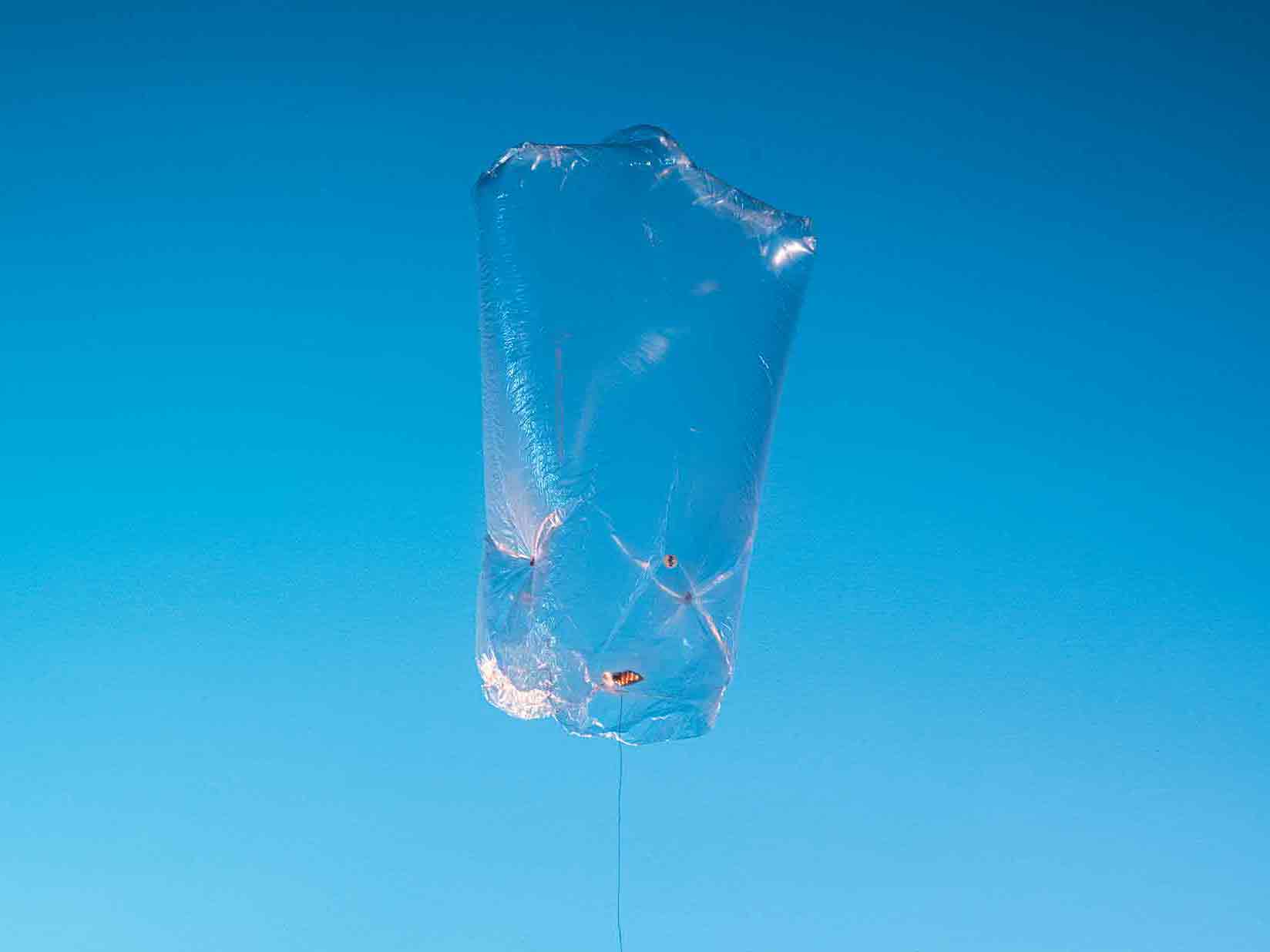

In November 1944, Japanese soldiers in a top-secret oceanside location loosed a set of balloons into the westerly winds. These globes, about 33 feet in diameter, contained a crude but ingenious device for releasing ballast that their inventors hoped would stay airborne for three to four days—long enough to reach the United States. There, an onboard timer would activate, causing the balloons to drop their payload: incendiary bombs.
Of the roughly 10,000 balloons—or “Fu-go”—launched, about 10 percent made it across the ocean. But the timer couldn’t control where the bombs dropped, so most fell in unpopulated areas. The strategy never amounted to much. Still, these balloons were the first successful intercontinental weapons.
Last year, a pair of foresters found a 70-year-old Fu-go, half-buried but intact, in the mountains of eastern British Columbia. That amazing discovery inspired me to build my own fire balloon—without the dangerous payload.
My design is much simpler than the historical one. Because my fire balloons lift off with hot air rather than helium, I need to use only lightweight materials. First I smear a dab of Sterno inside a small aluminum pie tin. Once lit, the fuel heats the air in a flimsy, plastic dry-cleaner bag, attached to the pie tin with thin wire. The volume of heated air gives the device enough buoyancy to rise hundreds of feet.
To prevent my DIY Fu-go from setting fires, I tether it with a spool of fine wire. On a cool, still night, it looks like a jellyfish floating toward the clouds.
WARNING: Play with fire, and you could get burned. So be careful, and keep your balloon under control!

Build Your Own Fire Balloon
You can make a model Fu-go fire balloon from a dry-cleaner bag and an aluminum pie tin. Dry-cleaner bags work well because they are extremely light and the volume of heated air inside them provides enough buoyancy to make them rise to astounding heights. I chose magnet wire to hold the bag to the pie tin because it is light and won’t burn if exposed to flame. The final piece, jellied alcohol, burns hot and provides a sustained source of heat for the duration of the flight.
WARNING: This project literally puts fire in the air—so be careful near the flame and build at your own risk. Keep the balloon under control at all times: attempt only on still days or nights and fly only in areas free of flammable items and materials.
Stats
- Time: 10 minutes
- Cost: $6
- Difficulty: Easy
Tools + Materials
- Punch or needle
- 2-inch aluminum-foil mini pie pan
- Scissors
- Spool of 34-gauge magnet wire
- Dry-cleaner bag
- Jellied alcohol (such as Sterno)
- Lighter

Instructions
- Poke four holes, one every 90 degrees, on the upper edge of the mini pie tin.
- Cut 4-foot-long lengths of magnet wire.
- Insert each piece of magnet wire though a hole in the pie tin and tie it off.
- Insert the free ends of the wires through the plastic dry-cleaner bag, spaced at equal intervals all the way around the bottom edge, and tie them off.
- Find the free end of the magnet wire remaining on the spool. Punch a hole in the center of the pie tin. Insert the wire into the hole and tie it off.
- Place a dab of jellied alcohol, about the size of a pencil eraser, inside the aluminum tin.
- Have an assistant hold the bag upright with the bottom of the bag open over the tin. Light the jellied alcohol. In few moments, the heated air will inflate the bag and then make it buoyant.
- As the bag rises, pay out the magnet wire so the fire balloon can gain altitude. When the fuel is used up, the balloon will slowly descend for retrieval.
- Fire balloons perform better on cool nights because they are more buoyant.
- If your balloon will not rise, reduce its weight. You can do this by cutting away as much aluminum as possible from the pan, and by using the thinnest magnet wire you can find that won’t break in the breeze.
This article was originally published in the May/June 2016 issue of Popular Science, under the title “Attack of the Fire Balloons.”